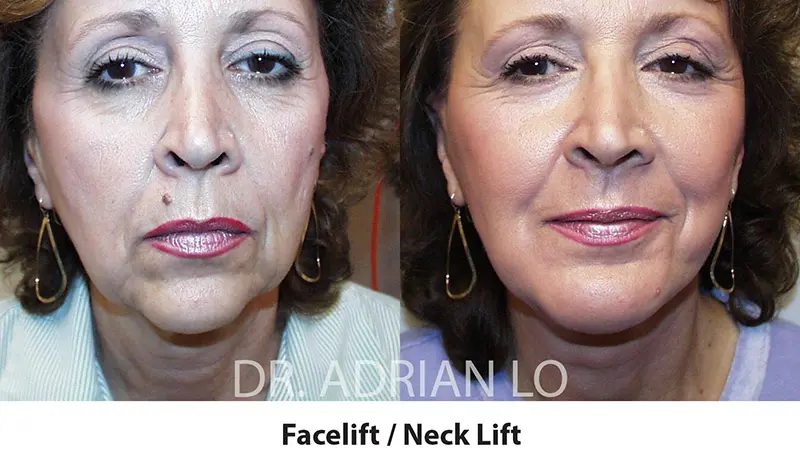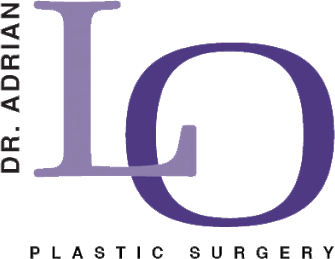The best age for facelift surgery depends far more on your individual needs than the number on your birthday cake. While many people assume there is a perfect decade to undergo facial rejuvenation, experienced plastic surgeons understand that biological age, skin condition, and personal goals matter much more than chronological age. Some patients benefit from facelift procedures in their early forties, while others wait until their seventies to achieve their desired results.

Understanding when you might be ready for a facelift requires examining multiple factors beyond simple age ranges. Your skin’s elasticity, the degree of facial aging you have experienced, and your personal aesthetic goals all play important roles in determining optimal timing. This comprehensive guide will help you understand the key considerations that determine the best age for facelift surgery and what factors truly matter most.
Why Age Matters Less Than Individual Factors
Skin Quality and Elasticity Considerations
Your skin’s natural elasticity plays a more significant role than your actual age in determining facelift candidacy. Some individuals maintain excellent skin quality well into their sixties, while others experience premature aging due to sun exposure, genetics, or lifestyle factors. A plastic surgeon evaluates how well your skin bounces back when gently pinched and stretched during consultation.
Patients with good skin elasticity typically achieve more natural-looking results regardless of their chronological age. Those with compromised skin quality may require additional procedures or different surgical approaches to achieve optimal outcomes. The ideal age for facelift surgery often correlates more closely with skin condition than with the calendar.
Individual skin quality varies significantly regardless of age. Some patients in their fifties have better skin quality than others in their forties. This variation makes personalized evaluation necessary for determining the best age for facelift procedures.
Facial Structure and Bone Changes Over Time
Facial bone structure changes throughout life, affecting how aging appears on different individuals. Some people experience more dramatic bone resorption around the eyes and cheeks, while others maintain stronger facial frameworks longer. These structural differences influence both the timing and approach of facelift surgery.
Patients with strong bone structure often can wait longer before needing facial rejuvenation procedures. Those with naturally weaker facial frameworks may benefit from earlier intervention to prevent more dramatic aging changes. Understanding your unique facial anatomy helps determine optimal timing for surgical intervention.
The relationship between bone structure and soft tissue aging varies among individuals. A skilled plastic surgeon assesses these factors during consultation to recommend the most appropriate timing and surgical approach for each patient’s unique anatomy.
Personal Goals and Lifestyle Requirements
Your personal aesthetic goals significantly influence the best age for facelift surgery. Some patients prefer early intervention to maintain a consistently youthful appearance, while others wait until more dramatic changes occur. Neither approach is inherently better, but each requires different surgical strategies and timing considerations.
Professional and social considerations also affect timing decisions. Patients in high-visibility careers may prefer earlier, more subtle procedures, while others can accommodate longer recovery periods for more comprehensive results. Your lifestyle and schedule availability should align with your chosen surgical approach.
Recovery time requirements vary based on the extent of surgery performed. Younger patients often recover more quickly but may need revision procedures sooner. Older patients typically require longer initial recovery but may enjoy longer-lasting results from their procedures.
What Signs Indicate You’re Ready for a Facelift

Loss of Jawline Definition and Jowl Formation
The development of jowls represents one of the clearest indicators that you may be ready for facelift surgery. This sagging occurs when facial tissues lose their attachment to underlying structures and begin descending due to gravity and time. Jowl formation typically becomes noticeable in the late forties or early fifties, though timing varies significantly among individuals.
When examining your profile in the mirror, a well-defined jawline should create a clear separation between your face and neck. As jowls develop, this distinction becomes blurred, creating a less youthful facial contour. The severity of jowl formation helps determine both timing and surgical approach for optimal correction.
Early jowl development may respond well to less invasive procedures such as ultrasound treatments with Sofwave, while more advanced sagging typically requires traditional facelift techniques. Recognizing these changes early allows for better surgical planning and more natural-looking results.
Deep Nasolabial Folds and Marionette Lines
Pronounced lines extending from your nose to the corners of your mouth, known as nasolabial folds, indicate significant facial volume loss and tissue descent. These lines deepen with age as facial fat pads shift downward and skin loses its natural support structure. When these folds become prominent even without facial expression, facelift surgery may provide the most effective correction.
Marionette lines extend from the corners of your mouth toward your jawline, creating a downturned appearance that can make you look perpetually sad or angry. These lines develop as the tissues around your mouth lose support and begin to sag. Both nasolabial folds and marionette lines often require surgical intervention for significant improvement.
The depth and prominence of these facial lines help plastic surgeons determine the most appropriate surgical approach. Mild lines may respond to less invasive procedures such as injectables, while deeper grooves typically require comprehensive facial rejuvenation for optimal correction.
Significant Neck Sagging and Turkey Neck Appearance
Neck aging often occurs more rapidly than facial aging, making it a key indicator for facelift candidacy. The development of prominent neck bands, loose skin, and the appearance commonly called “turkey neck” suggests that surgical intervention may provide the most effective improvement. These changes typically become noticeable in the fifties and sixties.
Neck sagging occurs due to weakening of the platysma muscle, loss of skin elasticity, and accumulation of excess fat deposits. When these changes become prominent, non-surgical treatments rarely provide adequate correction. A comprehensive facelift approach that addresses both facial and neck aging typically delivers the most satisfying results.
The severity of neck aging often determines the surgical technique required for optimal correction. Mild changes may respond to limited approaches, while advanced sagging typically requires more extensive surgical intervention for significant improvement.
How Different Age Groups Benefit from Facelifts
Patients in Their 40s and Early Intervention
Facelift surgery for younger patients in their forties typically focuses on addressing early signs of aging before they become more pronounced. These procedures, such as a mini-facelift, often involve less extensive surgery with shorter recovery times and more subtle results. Early intervention can help maintain a consistently youthful appearance over time.
Younger patients often have better skin quality and healing capacity, which can contribute to more natural-looking results and faster recovery. However, they may require revision procedures sooner than older patients due to continued aging processes. The decision for early facelift surgery should be based on individual aging patterns rather than chronological age alone.
Facelift age recommendations for patients in their forties often emphasize preventive approaches that address specific areas of concern while preserving natural facial expressions. These targeted interventions can delay the need for more extensive procedures later in life.
Patients in Their 50s and Comprehensive Rejuvenation
The fifties represent the most common decade for facelift surgery, as aging changes typically become more pronounced during this time. Patients in this age group often benefit from comprehensive approaches that address multiple areas of facial aging simultaneously. The best age for facelift surgery often falls within this decade for many individuals.
Facelift benefits by age become particularly apparent in the fifties, as patients typically have enough aging to justify surgical intervention while maintaining good healing capacity. This combination allows for significant improvement with reasonable recovery expectations and long-lasting results.
Patients in their fifties often have realistic expectations about surgical outcomes and understand the commitment required for optimal results. This maturity, combined with appropriate aging changes, makes this decade ideal for many facelift candidates.
Patients in Their 60s and Beyond with Advanced Aging
When to consider a facelift becomes particularly relevant for patients in their sixties and beyond, as aging changes are typically well-established by this time. These patients often achieve dramatic improvements from facelift surgery, though recovery may take longer than for younger individuals.
Advanced aging provides plastic surgeons with more tissue to work with, potentially allowing for more significant improvements in facial contours. However, skin quality and healing capacity may be affected by age, requiring careful surgical planning and realistic expectation setting.
Best candidates for facelift surgery in this age group typically have good overall health and realistic expectations about both results and recovery. The decision should be based on functional capacity and personal goals rather than chronological age alone.
When Timing Affects Your Facelift Results

Recovery Considerations by Age Group
Facelift recovery by age varies significantly, with younger patients typically experiencing faster initial healing but potentially more swelling and bruising. Older patients may have slower healing but often experience less dramatic swelling during the recovery process. Understanding these differences helps in planning surgery timing and managing expectations.
Younger patients often return to work and social activities sooner after facelift surgery, though final results may take longer to fully develop. Older patients typically require more time off from activities but may see final results sooner once initial healing is complete.
Planning your surgery timing should consider both your healing capacity and your lifestyle requirements. Patients with demanding schedules may benefit from surgery at younger ages when recovery is typically faster, while those with more flexible schedules can accommodate longer recovery periods.
Longevity of Results Across Different Ages
The longevity of facelift results varies based on multiple factors, including age at the time of surgery, skin quality, and lifestyle factors. Younger patients may enjoy longer-lasting results due to better skin quality, though continued aging may necessitate revision procedures.
Older patients often achieve dramatic improvements that can last for many years, particularly when combined with good skincare and sun protection. The key is matching surgical approach to individual aging patterns and lifestyle factors that affect result longevity.
Understanding how aging continues after facelift surgery helps in setting realistic expectations and planning for potential future procedures. Many patients enjoy significant improvement for many years regardless of their age at the time of surgery.
Combining Procedures for Maximum Impact
Many patients benefit from combining facelift surgery with other procedures to achieve comprehensive facial rejuvenation. The best age for facelift surgery often coincides with the optimal timing for other procedures such as eyelid surgery, brow lifts, or facial fat grafting.
Younger patients may benefit from combining facelift surgery with preventive treatments such as fat grafting to maintain facial volume. Older patients often combine facelifts with procedures that address advanced aging changes in multiple facial areas simultaneously such as the eyelids and brow area.
The decision to combine procedures should be based on individual needs, healing capacity, and aesthetic goals. A comprehensive approach can provide more harmonious results while minimizing overall recovery time and surgical expenses.
What Makes You an Ideal Facelift Candidate
Physical Health Requirements and Medical Clearance
Best candidates for facelift surgery must be in good overall health to safely undergo the procedure and heal properly afterward. This includes having well-controlled medical conditions, maintaining a stable weight, and being free from conditions that impair healing. A complete evaluation ensures that patients can safely undergo surgery and achieve optimal results.
Cardiovascular health plays a particularly important role in facelift candidacy, as the procedure involves general anesthesia and potential changes in blood pressure during recovery. Patients with uncontrolled high blood pressure, recent heart problems, or significant cardiovascular disease may need to postpone surgery until these conditions are better managed.
Non-smokers typically make ideal facelift candidates, as smoking significantly impairs healing and increases complication risks. Patients who smoke must typically quit for several weeks before and after surgery to minimize healing problems and achieve optimal results.
Realistic Expectations and Mental Preparation
Understanding what facelift surgery can and cannot achieve is important for patient satisfaction. Ideal candidates have realistic expectations about both the results and the recovery process. They understand that while facelift surgery can turn back the clock, it cannot stop the aging process entirely.
Mental readiness for surgery includes understanding the commitment required for proper healing and maintenance of results. This includes following post-operative instructions, attending follow-up appointments, and maintaining realistic expectations throughout the recovery process.
Patients who are emotionally stable and have appropriate support systems during recovery typically achieve the best outcomes. The decision for facelift surgery should be made for personal reasons rather than to please others or meet external expectations.
Commitment to Post-Surgical Care and Maintenance
Successful facelift results require commitment to proper post-operative care and long-term maintenance. This includes following activity restrictions during healing, attending all follow-up appointments, and maintaining good skincare practices after recovery is complete.
Long-term maintenance of facelift results often includes sun protection, quality medical grade skincare products, and potentially non-surgical treatments to maintain and enhance surgical outcomes. Patients who are committed to these maintenance requirements typically enjoy longer-lasting and more satisfying results.
The commitment to post-surgical care extends beyond the initial healing period and includes lifestyle choices that support healthy aging. Patients who maintain stable weight, avoid smoking, and protect their skin from sun damage typically enjoy the longest-lasting facelift results.
Experience Excellence with Dr. Adrian Lo’s Facelift Expertise
When considering the best age for facelift surgery, consulting with an experienced plastic surgeon is important for determining optimal timing and approach. Dr. Adrian Lo understands that each patient’s needs are unique and require personalized evaluation. His expertise in facial rejuvenation helps patients achieve natural-looking results that enhance their individual features while addressing their specific aging concerns.
According to the American Society of Plastic Surgeons, facelift procedures have consistently been among the top five cosmetic surgical procedures, with over 234,000 procedures performed annually. Through comprehensive consultation and advanced surgical techniques, Dr. Lo helps patients determine the ideal timing for their facelift procedure based on their individual anatomy, goals, and lifestyle requirements.
To discuss your facial rejuvenation options and determine if you are ready for facelift surgery, schedule a consultation with our experienced team at Philadelphia plastic surgery practice today.
